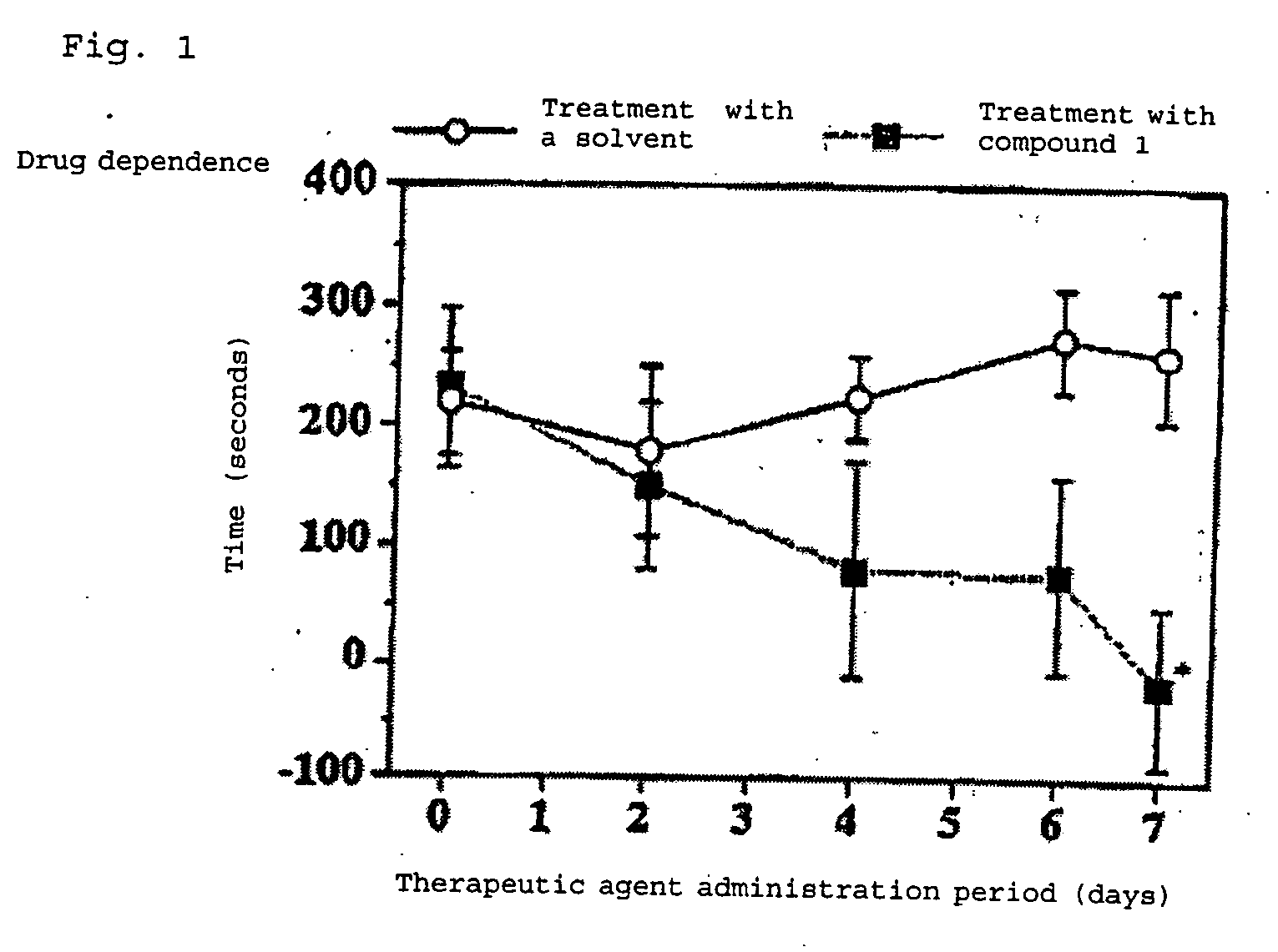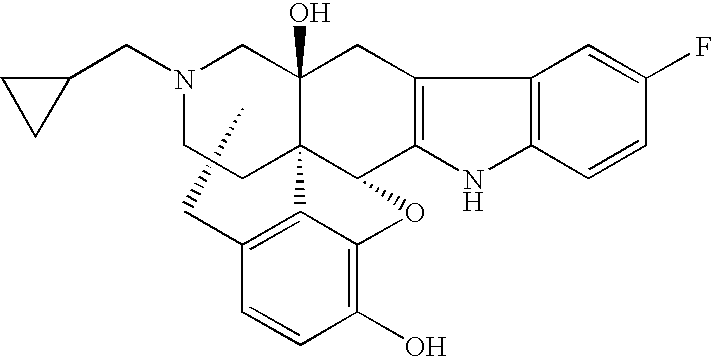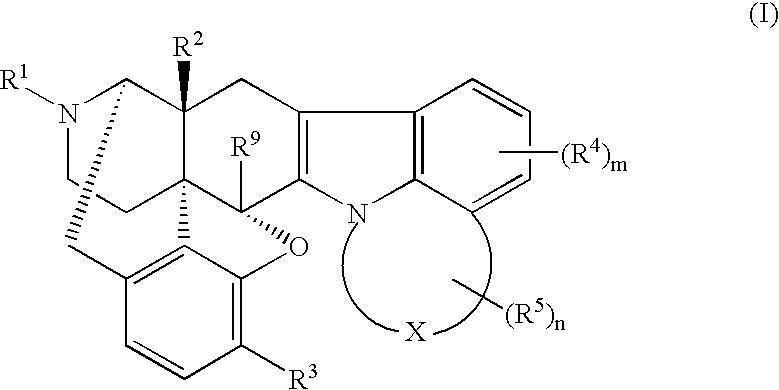Therapeutic agents for drug/substance dependence
a technology for drugs and substances, applied in the direction of drug compositions, biocide, heterocyclic compound active ingredients, etc., can solve the problems of affecting the quality of life of users, so as to inhibit the expression per se of dependence and penetrate the brain excellent
- Summary
- Abstract
- Description
- Claims
- Application Information
AI Technical Summary
Benefits of technology
Problems solved by technology
Method used
Image
Examples
example 1
Evaluation of Lipophilicity of Compounds Using a Partition Coefficient as an Indicator
[0030] For penetration from blood to the brain, there is a barrier called the “blood-brain barrier,” and the lipophilicity is an important factor for penetration into the brain. One of the parameters used for estimating the lipophilicity of a compound is partition coefficient P. The partition coefficient P is defined as the ratio of the concentration of a compound in n-octanol to the concentration of the compound in water. When the partition coefficient is larger, it expresses that the lipophilicity of the compound is higher. The partition coefficient P can be experimenttally obtained and can also be obtained by calculation. For compounds 1 to 4, the logarithm of partition coefficient P, logP, values reported by Crippen, et al. (Crippen, G. M., et al., J. Chem. Inf. Comput. Sci., 27, 21, 1987) were calculated using CS Chem DrawR (CambridgSoft), and the calculation results are shown in Table 1. Co...
example 2
Effect of Compound 1 in Promoting the Recovery Process after Acquisition of Psychological Dependence by a Stimulant Drug (Therapeutic Effect for Stimulant Drug Dependence)
[0031] The effect of compound 1 in promoting recovery during the convalescence after the acquisition of psychological dependence by a stimulant drug was discussed using the conditioned place preference method (Suzuki, T., et al., Psychopharmacology, 102, 438, 1990; Spyraki, C., The Psychopharmacology of Addiction, p. 96, Oxford Medical Publication, New York, 1988; hereinafter called “CPP method”). As a stimulant drug forming psychological dependence, methamphetamine hydrochloride was used. Furthermore, as a therapeutic agent for drug dependence, compound 1 was used.
[0032] For the experiment, SD male rats were used. The experimental apparatus used was a CPP apparatus having two compartments (one black, the other white). In the experiment, at first, the rats were trained for being conditioned with the sensory effe...
PUM
| Property | Measurement | Unit |
|---|---|---|
| acid | aaaaa | aaaaa |
| physical dependence | aaaaa | aaaaa |
| lipophilic | aaaaa | aaaaa |
Abstract
Description
Claims
Application Information
 Login to View More
Login to View More - R&D
- Intellectual Property
- Life Sciences
- Materials
- Tech Scout
- Unparalleled Data Quality
- Higher Quality Content
- 60% Fewer Hallucinations
Browse by: Latest US Patents, China's latest patents, Technical Efficacy Thesaurus, Application Domain, Technology Topic, Popular Technical Reports.
© 2025 PatSnap. All rights reserved.Legal|Privacy policy|Modern Slavery Act Transparency Statement|Sitemap|About US| Contact US: help@patsnap.com



